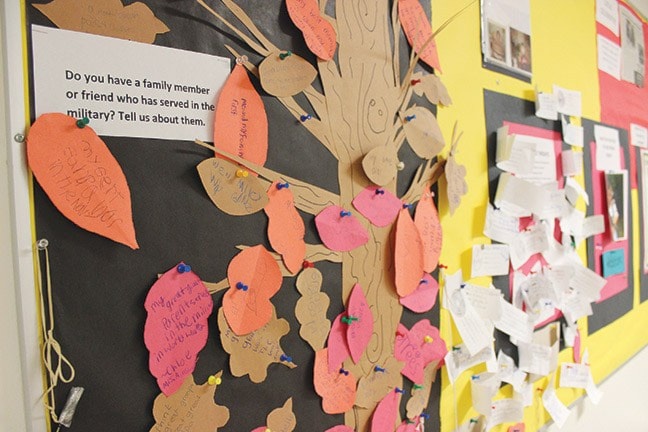Nearly one-and-a-half years since the implementation of district-wide professional learning community (PLC) time in Comox Valley schools, the Comox Valley Record looks at a couple examples of the work being done by staff at the elementary and secondary levels. The purpose of PLC time is to give staff designated time to work collaboratively on inquiry projects designed to improve student learning. In the second part of this two-part series, an example of work done in elementary schools is examined.
Renee Andor
Special to The Record
Though not the initial goal, Arden Elementary’s four PLC projects from last year each affected the entire school, according to a couple of teachers.
Kindergarten/Grade 1 teacher Jennifer Hedican and Grade 4/5 teacher Phebe May say last year’s projects are all still being implemented in classrooms this year, too.
“In every group the goals may not initially have been to reach all students in the school, but they did,” says May. “This is very much a collaboration, how to make Arden better, to improve learning at Arden.”
One team focused on implementing the successful learner traits framework (being strategic, industrious, creative, confident, risk-taking, thoughtful, enthusiastic, compassionate) in the school. The group made posters for each classroom so the traits could become part of how teachers teach and evaluate, according to May.
Win lunch with the principal
The group also established a school-wide initiative in which students displaying the learning traits receive a golden eagle and their name goes onto a board by the office. A draw is held each month and the winner goes to lunch with the principal.
Hedican and May say they now hear the successful learner trait language being used around the school.
“I had (my students) fill out three stars for how they’re doing and wish for how they’d like to do better,” May says, for example. “Almost every child used the successful learner traits to describe how they’d done well and to describe how they’d like to be better.”
E-reader for literacy
Another group worked to make e-reader technology (which can recite words out loud as the reader follows along) more available to help reluctant readers. Hedican says this group went into other teachers’ classrooms and taught all students how to use them and access materials. According to Hedican, the group reported that the engagement of reluctant readers went up.
The Daily 5 and CAFE model to improve literacy was the group Hedican and May were in. Hedican calls the model a “holistic learning framework” teachers can use to set up their language arts, which also drives kids to be independent learners; students’ literacy goals are individualized, so they are comparing themselves to themselves rather than other students.
“I was a rookie in terms of the Daily 5,” recalls May, noting that all staff in the group learnt about the model, but there were teachers in the group more experienced with it, from whom she was able to learn, too.
“So I learned about it last year, developed confidence, really tried to embed myself in the theory. And then this year, I am implementing it and I would have never been able to do that the way I am now if I hadn’t had that time.
“I had the chance to watch colleagues — they also visited my classroom to model how to do it properly (last year) — and because we spent time looking at literature written by people who support that model ... I feel like it is something that I can teach comfortably.”
A sense of belonging
The fourth group worked to improve school culture and increase every student’s sense of belonging at school. It created a board outside the school office called ‘Facewall’ to increase student interaction between all grades. For example, a question is posted on Facewall and students can write their answers down and post them up. Also, a childhood photo of a staff member is posted and students can guess who they think it is.
Hedican says she’s impressed with the honesty of the student postings, noting a lack of goofy postings.
There is also a PLC information board up for interested parents, and they can submit any questions they have about PLC time.
May says she clearly sees a positive difference in students thanks to the projects.
“At the most it’s three hours instructional time a month (devoted to PLC time) ... but if I think about what goes into that three hours for every student in the school as opposed to what they might be doing in their classrooms, I think the benefit for them is huge,” she says.
Hedican adds: “You’re also being a learner again which is really important, especially if you’ve been in the profession for a while or you’ve been with that same grade for a while, you forget what effort learning takes for kids.”
For more information about PLC time, visit www.sd71.bc.ca.
